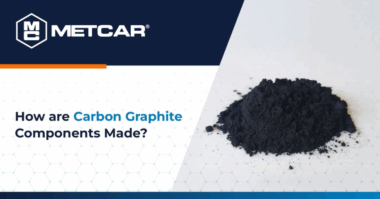The railroad infrastructure of our nation consists of an intricate network encompassing tracks, crossings, bridges, tunnels, and stations. This entire system must be diligently monitored around the clock to optimize the flow of rail traffic and prevent serious accidents that can cause catastrophic consequences.
Considering the enormous expanse of the rail system, safeguarding against every potential collision site is no easy task. Our railroad infrastructure spans a whole continent and, at any moment, can support hundreds of thousands of railroad cars.
So how is all the data that goes into tracking railcars’ locations and speeds managed and utilized? To put it very simply, we rely on electrical contacts.
Signal Breakdown Caused By Fusible Metal
Railroad signaling systems rely on electrical relays, which are composed of many electrical contacts that can be used to transmit current from one circuit to another. Contacts can either be open or closed, meaning they are actively transmitting current or they are not. In the process of opening or closing, there can be some degree of electrical arcing between the two circuits. Electrical arcing is a breakdown of gas between two conductive media that results in an electrical discharge.
An electric arc between two pieces of metal can actually cause the two pieces to weld together. This is clearly problematic in the case of electrical relays which need to open and close many times over the course of their operating life with consistency and reliability. That is where graphite comes in.
Choosing Impregnated Graphite For Rail Signal Systems Prevents Issues
Graphite is a non-welding material, meaning it will not fuse to metals when exposed to heat. In the case of electrical relays for railroad signaling, this material property is crucial to ensure safety. If an electrical contact in a railroad relay were to become fused shut, the consequences could be severe.
Although graphite offers a reliable solution to this fusing issue, using plain graphite would result in excessive electrical contact resistance and would not allow for sufficient signal transmission. By impregnating graphite with metals (a process known as molten metal impregnation), carbon graphite manufacturers enhance the conductivity of their material and overcome this issue.
For railroad contacts in particular, relay manufacturers typically use a metal-impregnated graphite that is 50% silver and 50% graphite by weight.
How Metal Impregnation Decreases Contact Resistance
The physics of relays explains how metal impregnation helps to minimize contact resistance in electrical relays. The efficient transmission of an electrical current through a material is strongly dependent on that material’s electrical conductivity (higher conductivity = lower resistivity = lower contact resistance).
Metals tend to be the most electrically conductive materials, since metals have free valence electrons in their molecular structure that easily flow through the metal’s lattice-like atomic structure in the presence of an electric field (i.e. form an electric current).
Of all metals, the most electrically conductive are the ones with atoms that have a single valence electron, such as silver, gold, or copper. Transmitting electrical energy to a single electron permits less energy loss as the energy flows from atom to atom than if that same amount of energy were dispersed over multiple valence electrons. This is the reason why practically all current-carrying wires are made of copper, a cheaper alternative to gold or silver.
By filling graphite’s porosity with metals like silver, you get the best of both worlds. You get the non-welding property of graphite combined with the electrical conductivity of silver. These are properties that cannot be compromised when designing safety-critical components such as railroad relays.
Metal impregnated graphite is the material of choice for many electrical contact applications, not just in railroad signaling systems. It can be used in all types of electromechanical controls, ranging from small electric motor brushes to large power plant safety switches. All these applications require a material that is reliable and has very specific material properties—this is a need that metal-impregnated graphite satisfies nicely. Over the years, carbon graphite manufacturers have developed this technology to a point where, in all likelihood, a suitable material grade for your electromechanical application now exists.




